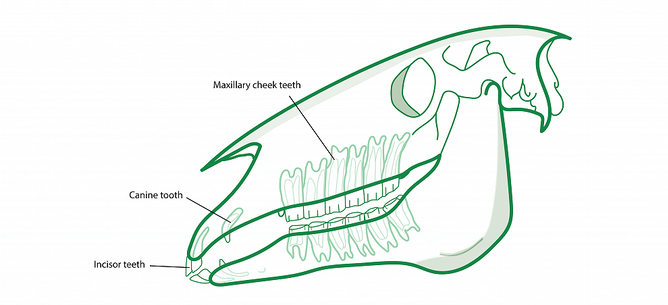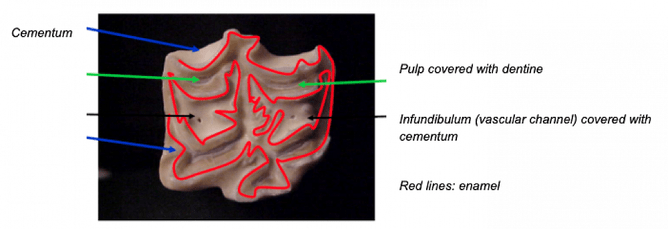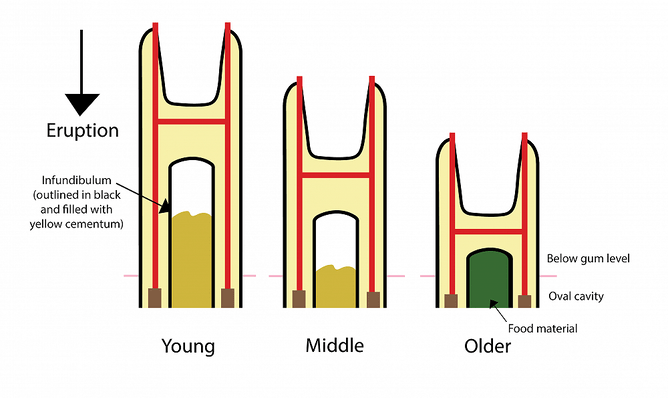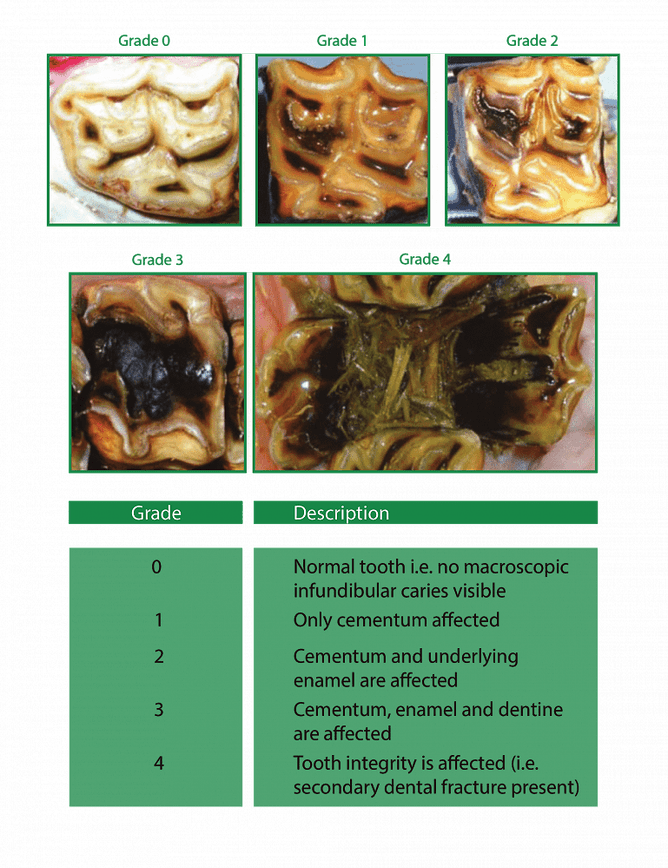Besides sharp (enamel) points and diastemata - one of the other things we look for with our dental examination is infundibular caries. The infundibulum is an extra tubule of enamel folding - the enamel is responsible for the sharp points. Infundibular caries can be found in the maxillary (upper) cheek teeth, as the lower cheek teeth normally don’t have an infundibulum.
It is thought that the cementum in the infundibulum (which should cover the channel) does not always develop properly, leaving a space for food to pack. As a consequence of the food packing, bacterial growth can occur and can further damage the tooth integrity. This can sometimes lead to tooth fracture and/or infection of the root (apical infection) of the tooth.
Image by: Equine Dental Clinic Ltd UK
In this image we see an upper cheek tooth erupting over time. The reason we see a lot of infundibular caries in older horses is because the part closer to the root often has undeveloped cementum - leaving an open space for food to pack.
Image by: Grading system from Dacre, 2005.
We often grade the infundibular caries for accurate monitoring and to assess the risk of tooth fracture. Because the infundibular caries can cause apical (root) infection without the tooth having a fracture, we often perform radiographs to assess the deeper structures of the tooth. In the worst case scenario where the tooth is in contact with a sinus - this can lead to sinusitis. This is a painful inflammation where pus can form in the sinus and drain out of one of the nostrils.
- Amarins Sijsling




